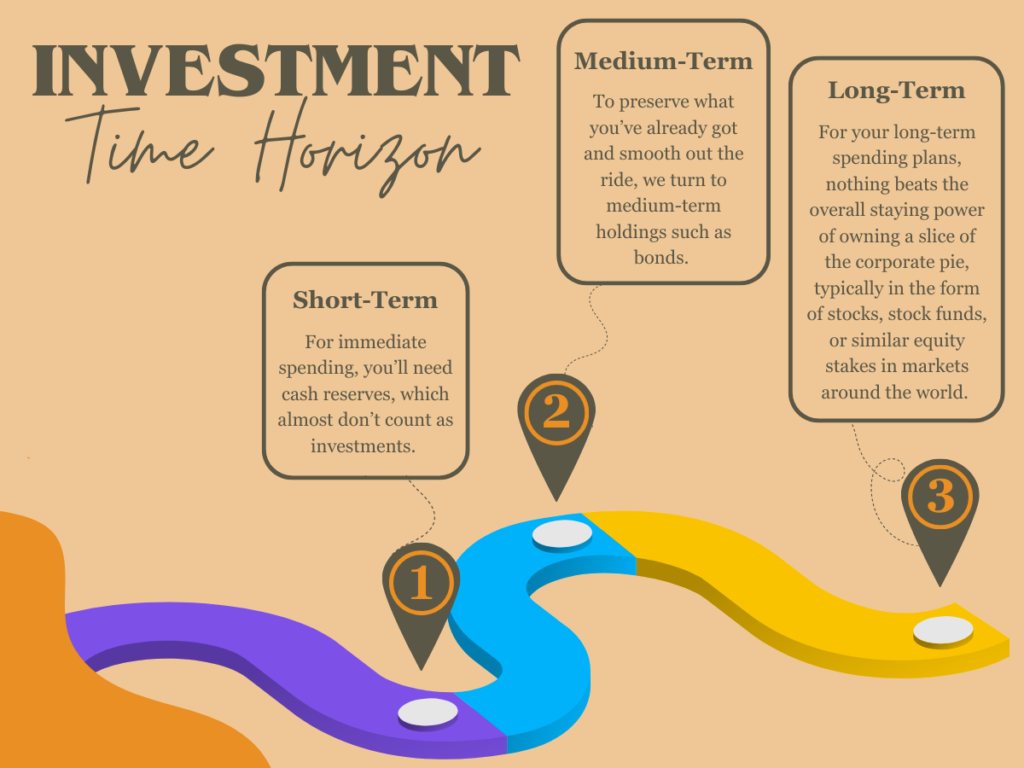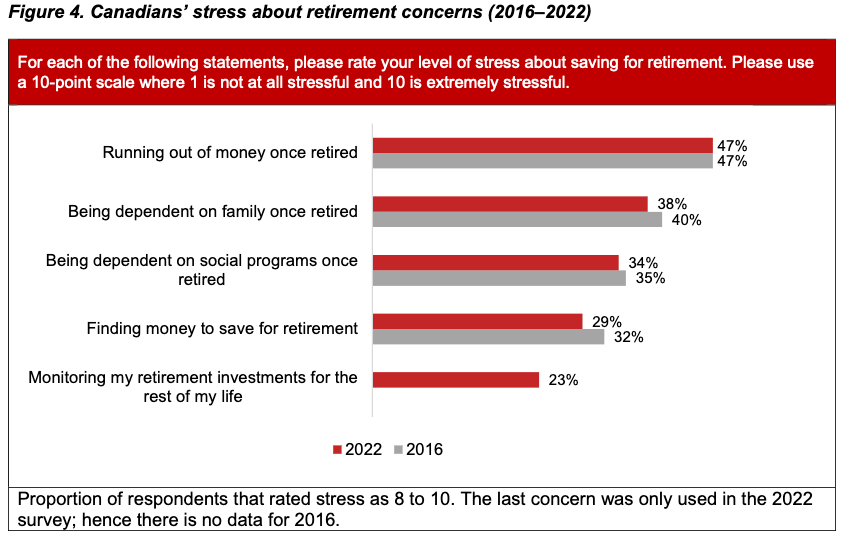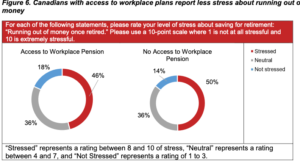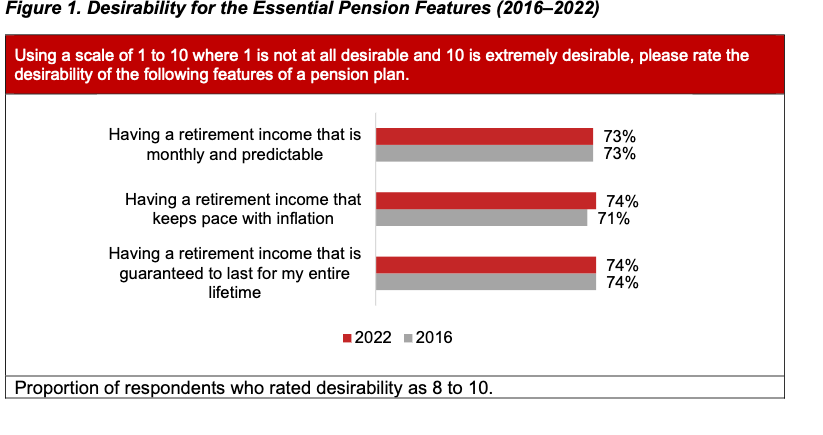 IV. Discovering Retirement Blind Spots – Part Two
IV. Discovering Retirement Blind Spots – Part Two
By Fritz Gilbert, TheRetirementManifesto.com
Special to the Financial Independence Hub
The full report includes three other graphs focused on the gap between retirees and pre-retirees, each of which includes some important discoveries. For brevity, the main findings for each topic are summarized below:
Things That People Miss About Their Career

A surprisingly large 62% of retirees miss the Social Interaction from work, whereas only 29% of pre-retirees expect that to be an issue. With a 33% gap, this was one of the largest retirement blind spots discovered by the survey.
The other two big blind spots related to what you’ll miss from your career include missing Mental Stimulation (38% retirees vs. 21% pre-retirees) and a Sense of Identity (31% vs. 22%)
FRITZ: I’ve written extensively on the many non-financial benefits we receive from work, and yet it’s something that most pre-retirees continue to underestimate. The most successful retirees discover ways to replace the non-financial benefits they once received from work, such as social interaction, mental stimulation, and a sense of identity highlighted by this study.
ERIC: I see this all the time among my clients who are still working. At this stage in their lives, they primarily associate their jobs with a paycheck and bonus. Their eyes are focused on the prize money at the finish line. They fail to see the psychological income that does not show up on their paystubs in the form of intellectual stimulation, purpose and meaning, and the most ignored component of all, social interaction. I can’t put a number on how much of your work paycheck comes from psychological income, but in my experience it’s a significant amount that until you retire you are probably seriously under-estimating. Most people assume that the primary challenge of retirement planning is financial when, for most people, the real challenge is replacing the psychological benefits from their work days with new activities that provide meaning and purpose as well as social interaction.
Challenges of The Retirement Transition

The highest response rate for transition challenges was finding the right Balance of Structure, with 39% of retirees citing that as a challenge. Fortunately, it appears that many pre-retirees also recognize this will be a challenge, with 45% citing it as a concern.
In other areas, pre-retirees are also more concerned with the challenges than appear to be warranted by the actual experience of retirees. In particular, pre-retirees responded with a higher % of concern than retirees for each of the following categories:
- Anxiety Over Future (30% pre- vs. 23% post-retirement)
- Meaning/Purpose (33% pre- vs. 23% post-retirement
- Outdated Identity (27% pre- vs. 20% post-retirement
- Mental Stimulation (30% pre- vs. 18% post-retirement
- Finding Happiness (23% pre- vs. 18% post-retirement
The Retirement Transition Isn’t As Smooth As Expected

A concerning 52% of pre-retirees “mostly agree” that the retirement transition will be smooth, whereas only 32% of retirees feel the same. This 20% gap is a warning to all pre-retirees and is further strengthened by the 26% of retirees who responded “mostly or strongly disagree” (vs. only 5% of pre-retirees). The reality is that transitioning into retirement is more challenging than most folks expect. A good takeaway for pre-retirees is to expect some turbulence during the transition. Ignore this retirement blind spot at your own risk.
FRITZ: It’s interesting to study the above results. While retirees tend to have better scores than pre-retirees on specific challenges, a much higher percentage of retirees report some difficulty in the transition compared to the expectation of pre-retirees. In fact, only 51% of retirees Agree/Strongly Agree that the transition was smooth, compared to 70% of pre-retirees who expect it will go smoothly.
ERIC: I think that most people in the planning phase only think of the positives of life in retirement. They seriously underestimate how big of a transition retirement can be. In fact, other industry surveys show this disconnect between expectations and reality. The greatest source of disconnect usually happens after the “honeymoon” period wears out. That typically happens within the first two years of retirement. I call this the “messy middle”. Many people associate retirement with a new beginning without ever acknowledging the ending of our prior stage in life or recognizing that all transitions in life usually involve a period of introspection and uncertainty before finding the necessary clarity and direction to move forward. Only a few of us skip out on the “messy middle.” I think it’s best when we plan for some turbulence ahead so that when we are shaken out of our comfort zone we’re neither surprised nor paralyzed from making the required adjustments. I like to remind my clients that a plan is just a guide meant to be revised as new data comes in. Keep iterating forward!
V. Which Components Lead To A Good Life in Retirement?
The final section of the survey was, in hindsight, a bit of “Motherhood and Apple Pie.” What does it take to lead a good life? Ask anyone, and you’ll likely see similar responses to what was revealed in the survey. In the survey, you’ll see we asked both pre- and post-retirees to rank these components. Results were similar between both groups, so for this summary, we’ll simply rank the components identified by those already retired, in descending order:
Components Rated as Very Important
- Healthy Living (77%)
- Time Management (68%)
- Financial Plan (53%)
- Relationships (52%)
- Purpose/Meaning (41%)
- Self-Identity (27%)
VI. Conclusion
We thank the 1,734 of you who participated in this joint study and hope all of you have found the results to be useful. We trust the findings on retirement blind spots will be helpful for those who are planning their retirements in the coming years. To reiterate the key blind spots, below is the conclusion of the key points from the Full Study write-up:
Major Retirement Blind Spots
- You’ll miss more than just the paycheck when you retire. You’ll miss the mental
stimulation and social interaction associated with work. Start now cultivating new social
connections and finding new sources of mental stimulation to replace the psychological
benefits of work.
- It will take you longer to shed your work identity than you expect. This will be primarily a
challenge in your early days in retirement. Don’t hang on to an outdated image of who
you were in the past. Retirement gives you the freedom to re-invent yourself.
- The transition from full-time work to life in retirement won’t go as smoothly as you
expect. You’ll struggle initially to come up with a new sense of purpose and meaning. Be
patient, but not complacent. Only you can figure out what’s important to you!
- Finding the right balance of structure in your schedule will be a greater challenge than
you currently likely anticipate. Making time for activities that bring joy and fulfillment is
important. A schedule is not a bad thing if it reflects your values and aspirations.
- Once you retire, you’ll worry less about money issues and more about your health and
that of your loved ones. As you plan your retirement think beyond just money issues. Take
a holistic approach that incorporates all the important areas of your life. Emphasize
balance.
In closing, it’s reassuring to see that the life satisfaction scores were highest among people who have been retired for more than two years. The future is bright.
Learn from those who are ahead of you on the retirement journey.
Your retirement will be better as a result.
Your Turn: If you’ve already retired, what was your biggest surprise about the transition? If you’ve not yet retired, what’s your biggest takeaway from this study, and are there any modifications you’ll make in your planning as a result? Let’s chat…
 Fritz Gilbert is the Founder of The Retirement Manifesto, a Plutus Award winning blog dedicated to helping people Achieve A Great Retirement. After 30+ years in Corporate America, most recently as a Commodity Trader, Fritz retired as planned in June 2018 at Age 55. He and his wife are looking forward to extended travel and “giving back” to their community through charitable work in retirement. This blog was published on his website on May 18, 2023 and is republished here with his permission.
Fritz Gilbert is the Founder of The Retirement Manifesto, a Plutus Award winning blog dedicated to helping people Achieve A Great Retirement. After 30+ years in Corporate America, most recently as a Commodity Trader, Fritz retired as planned in June 2018 at Age 55. He and his wife are looking forward to extended travel and “giving back” to their community through charitable work in retirement. This blog was published on his website on May 18, 2023 and is republished here with his permission.













